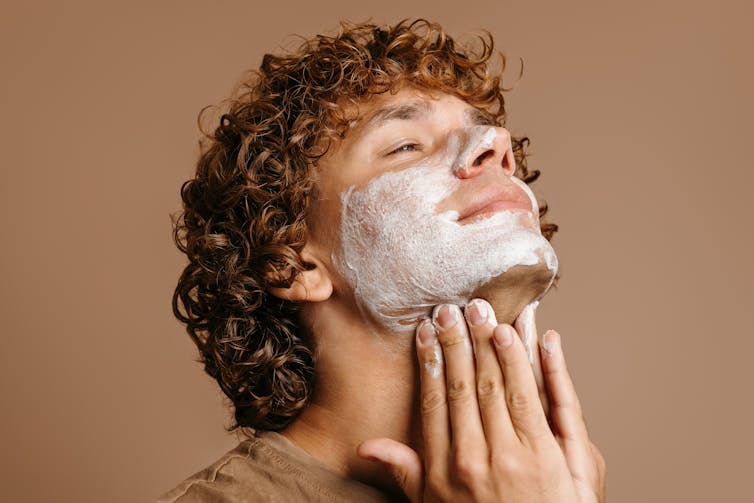
The recent success of the Netflix show Adolescence has drawn attention to misogynistic rhetoric and how it spreads online. Safeline, an organisation supporting survivors of sexual abuse, has warned that terms like “high-value” and “low-value men” (also described as “alpha” and “beta” men) are being used to radicalise boys, drawing them into embracing such rhetoric.
Last year, Elon Musk shared a post that argued only “high T alpha males” – men with high testosterone levels – can think freely and are most qualified to lead and govern. Relevant here is the reach of influencers like Andrew Tate, a self-described misogynist who, with his brother, is now facing 21 charges in the UK including rape and human trafficking, all of which they deny.
What do these terms mean, and how harmful are they?
The terms alpha and beta male are pseudoscientific terms used to push a concept of masculinity as necessarily hierarchical and aggressive. The theory frames the ideal of a man as someone who is financially successful, assertive, strong, logical and a “natural” leader.

Boys and girls are together facing an uncertain world. But research shows they are diverging when it comes to attitudes about masculinity, feminism and gender equality.
Social media, politics, and identity all play a role. But what’s really going on with boys and girls? Join The Conversation UK and Cumberland Lodge’s Youth and Democracy project at Newcastle University for a discussion of these issues with young people and academic experts. Tickets available here.
Acquiring high-value status is not viewed merely as key to success in life, but also for attracting what are seen as high-value – namely virtuous and physically attractive – women, as well.
Common and serious use of terms like alpha or high-value male were once largely confined to niche internet subcultures like the manosphere and incel (involuntary celibate) forums. But they have broken into the mainstream through influencers like Tate, whose followers describe him as “Top G”.
Changing norms?
There are also signs that the ideas around what it means to be “high value” are changing from the traditional, hegemonic view of masculinity. An interesting case study is Ashton Hall, whose morning routine video recently garnered millions of views on TikTok, and was widely discussed online.
The male self-improvement influencer’s meticulously structured day comprises a series of self-optimisation tasks, starting with push-ups at 4am, journalling by 4.40am, and dunking his face in ice water before hitting the gym at 6.20am. After another ice-water face plunge and some hours of work, the video ends with a woman presenting him with his evening meal.
It is interesting to see Hall take practices traditionally seen as feminine, like journalling and skincare, and embrace them as part of an otherwise very traditionally masculine morning routine.
Another hypermasculine influencer, Hamza, also blends his tough man demeanour with practices like meditation, nutrition and wellness. He frames these habits as “warrior training”. Such practices, then, are not viewed as feminine or emasculating.

Masculinity today is influenced by neoliberal ideals, where a man’s value is measured by his productivity and success. Practices like self-care are branded as discipline and performance-enhancing tools, used to construct the most optimised, competitive version of the male self.
Ashton Hall may not describe himself as an “alpha male”, but in many respects he embodies the idealised neoliberal archetype of masculinity: physical strength, wealth and material possessions.
While Tate’s displays of wealth and women are clear performances of masculine dominance, Hall’s more restrained approach fits within the same hierarchy. In both, “value” is defined by discipline, social ascendancy and power, especially over women. In Hall’s video, it is a woman’s hands that can be seen preparing and serving his food, reinforcing traditional gender roles.
Why is it harmful?
It’s important to note that not all hypermasculine influencers are necessarily bad role models for young men and boys.
But, as we have explored in a recent report, self-improvement content can be a key gateway into the misogynistic digital space of the manosphere.
In our analysis of online discussions, we found that many of those drawn to hypermasculine influencers reported struggling with various offline vulnerabilities. These included experiencing big life changes, anxiety, depression, bullying and social isolation, and also being neurodiverse. Young followers described motivational content as having “saved” them. Others came across this content through otherwise innocuous searches about getting better abs or finding a girlfriend.
One 15-year-old in our research, for example, recalled being severely bullied at school. He said that after adopting a strict routine inspired by Tate (waking at 6 am, pursuing fitness, cutting out social media), “Now people respect me.”
Initially, what young men find may boost their confidence. But in encountering the promotion of unrealistic standards for self-improvement and a “hustle culture” mentality, they may be indoctrinated into an online world of rigidity and misogyny.
Assigning worth to men based on social and economic status has personal and societal consequences. It presents failure to meet these standards as a path to loneliness and suffering, and frames following self-improvement influencers as the only solution.
The appeal of self-improvement lies in its promise of transformation – from a state of dissatisfaction and unfulfillment to one of abundance, empowerment and power. Even followers of Tate’s who say they don’t agree with his views of women are drawn to his financial and business success.
While presented as aspirational, being “high-value” is typically reserved to those with privileges of time and wealth, making it inherently exclusive and inaccessible to most. More importantly, it encourages a worldview where people are judged not for who they are, but for rather how much they produce and what they can offer.
Such rhetoric reduces human relationships to metrics-based transactions based on a hierarchical order where only those who have accumulated the most power, wealth, and success rise to the top. Andrew Tate’s “Top G” persona rests on this understanding of human relations, resulting in a hyper-competitive transactional model of masculinity.
More concerning is the ease through which this discourse lends itself to misogynistic narratives. In one video, Tate describes how a “body count [the number of sexual partners] is the easiest way to judge the value of a woman”.
This metric, which men are exempted from, becomes the standard that men can use to asses and demean women. It reveals the true intentions behind concepts such as “high value” – a way to rank men and justify the control and devaluation of women, further reinforcing systems of power and male dominance.
Jwana Aziz receives funding by University of Birmingham QR Policy Support Funding and a donation from the Barker Family Trust.
Anna Lavis has previously received funding for research into online harms from Wellcome, Samaritans and the ESRC, and the work on which this article draws was funded by University of Birmingham QR Policy Support Funding and a donation from the Barker Family Trust. Anna sits on Meta's Eating Disorders and Body Image Global Experts Advisory Board, but receives no payment for this work.
This article was originally published on The Conversation. Read the original article.







